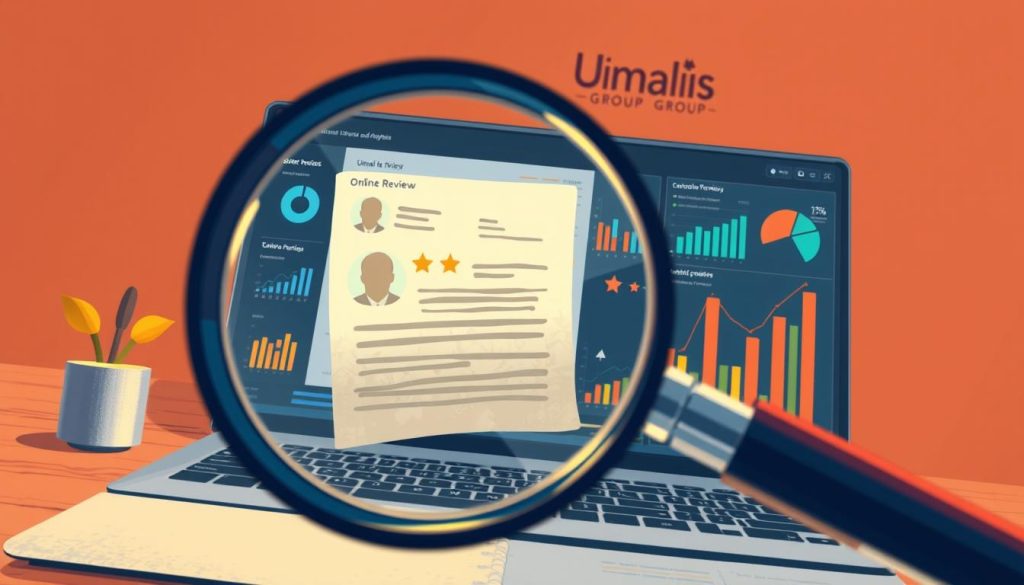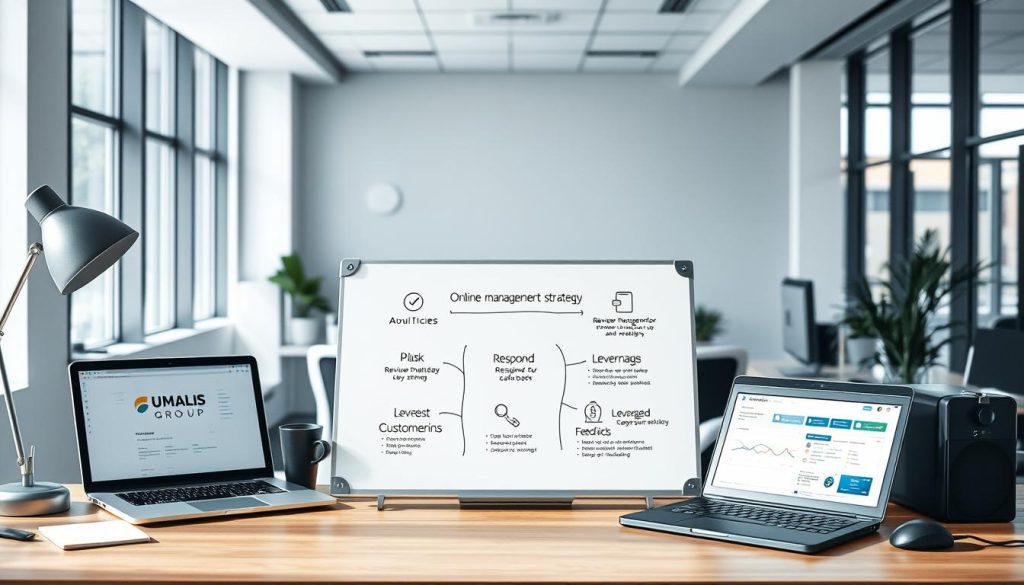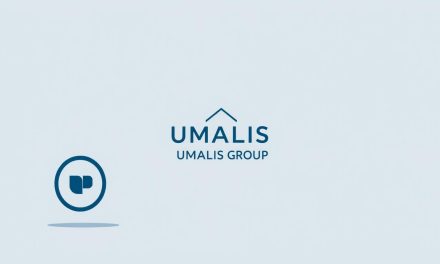Imagine standing at a crossroads where every customer’s opinion shapes your professional journey. Last year, a local bakery owner shared with me how a single unfair review nearly derailed her business – until she learned to harness feedback strategically. Stories like hers remind us that every interaction matters in today’s digital marketplace.
Research shows 9 out of 10 consumers check feedback before engaging a company. What’s more startling? Nearly 90% trust these opinions as much as friends’ advice. This isn’t just about stars and ratings – it’s about your reputation becoming your most valuable asset.
We’ve helped countless professionals transform criticism into growth opportunities. One key lesson emerges: Successful strategy blends proactive listening with ethical practices. The FTC’s crackdown on fake testimonials proves authenticity isn’t optional – it’s the foundation of lasting trust.
Table of Contents
Key Takeaways
- Consumer decisions heavily rely on digital feedback systems
- Authentic engagement builds credibility faster than marketing campaigns
- Regulatory compliance protects against reputation risks
- Strategic response planning turns challenges into advantages
- Continuous improvement drives customer retention
Your business deserves more than damage control. Through this guide, you’ll discover how to create meaningful connections with customers, turning casual reviewers into loyal advocates. Let’s build a framework that supports both your values and growth objectives.
Understanding the Value of Customer Feedback
Behind every successful business lies a treasure trove of customer insights. These voices shape purchasing patterns, build trust, and directly influence revenue. Let’s explore how feedback transforms casual interactions into strategic advantages.
The Impact of Reviews on Consumer Decisions
Consumers increasingly rely on peer perspectives when choosing services. Studies reveal 92% of people prioritize businesses with at least a 4-star rating. This isn’t about perfection—it’s about demonstrating reliability, expertise, and professionalism, traits 66% of buyers value most.
Positive comments create a ripple effect. For instance, 72% of customers take action only after reading favorable feedback. This translates to tangible gains: companies with excellent ratings see clients spending 31% more per transaction.
Data-Driven Insights on Conversion Rates
Numbers don’t lie. Products with five quality reviews enjoy a 270% higher purchase likelihood than those without. Responding to feedback boosts conversion rates by 144%, while strategic placement of testimonials can triple revenue per visitor.
- Feedback loops identify service gaps and innovation opportunities
- Authentic testimonials reduce buyer hesitation by 68%
- Regular engagement builds lasting client relationships
Evaluating Review Credibility and Authenticity

Trust forms the bedrock of customer relationships, making review credibility critical for businesses. With 40% of consumers admitting they’ve encountered fake feedback, learning to separate genuine insights from fabricated content becomes essential.
Spotting Suspicious Patterns
Sudden bursts of feedback within short time frames often signal manipulation. For example, 15 five-star ratings appearing overnight might indicate a coordinated campaign. The FTC recently fined a tech firm $3 million for creating fake accounts to boost their site reputation.
Genuine users typically leave varied ratings over time. Check profiles for multiple entries across different businesses. Accounts created solely to post one review – especially vague or overly emotional ones – warrant closer scrutiny.
Decoding Reviewer Behavior
Authentic feedback often includes specific details about products or service interactions. One hotel chain discovered competitors posting negative reviews mentioning nonexistent amenities. Cross-reference claims with your actual offerings to detect mismatches.
Watch for subtle red flags:
- Identical phrasing across multiple sources
- Overuse of marketing jargon
- Disproportionate focus on minor issues
Remember, some fake reviews use 4-star ratings to appear credible. The FTC requires clear disclosures for incentivized feedback – look for phrases like “free product received” in legitimate posts. By combining pattern analysis with contextual checks, you protect your business while maintaining ethical standards.
How to Manage Online Reviews Effectively
Navigating digital feedback requires a compass, not just reactions. A structured approach transforms scattered opinions into actionable insights that protect your business reputation while fostering growth.
Start by mapping priority platforms. Local service providers thrive on Google My Business, while hospitality brands need TripAdvisor focus. Software companies? Capterra and G2 drive decisions. This targeting ensures you catch 89% of customer voices where they matter most.
Develop response templates that adapt to context. Thank loyal clients personally for glowing feedback. For concerns, acknowledge specific issues: « We appreciate you sharing your experience with our delivery timelines » builds trust better than generic replies. Train teams to maintain brand voice consistency across all channels.
Integrate review tracking with CRM systems. Real-time alerts let you address concerns before they escalate. One retail chain reduced negative ratings by 40% using automated sentiment analysis paired with human oversight.
Turn critics into collaborators. Public responses showing problem-solving attract 3x more engagement than silent resolutions. Balance transparency with professionalism – 68% of buyers trust businesses that address feedback openly.
Proactive management isn’t damage control. It’s reputation-building through strategic listening. When done right, your response strategy becomes a growth engine, converting casual commenters into lifelong advocates.
Tips for Collecting and Encouraging Genuine Customer Feedback
Your customers’ voices hold transformative power when captured thoughtfully. Modern tools and strategic timing turn casual interactions into valuable insights that strengthen your service quality and product offerings.
Streamlining the Review Process with QR Codes and NFC
Eliminate friction for clients wanting to leave review comments. QR codes printed on receipts or displayed at checkout counters connect directly to your preferred feedback platform. NFC-enabled cards let customers tap their phones to access review pages instantly.
One restaurant chain saw a 63% increase in customer feedback after placing QR codes on tables. For dissatisfied clients, these tools can route them to private resolution channels instead of public platforms.
Personalizing Requests for Reviews at the Right Time
Timing transforms requests from annoying to appreciated. Ask for input when satisfaction peaks – after resolving a complaint, delivering a product, or completing a service milestone. A boutique hotel increased responses by 41% by sending review links within 2 hours of check-out.
Train staff to recognize natural moments for in-person requests. A simple « How’s everything working for you? » during positive interactions often leads to authentic feedback. Follow-up emails should reference specific purchases or interactions to show genuine interest.
Responding to Reviews: Turning Negatives into Opportunities

Every customer interaction holds potential – even criticism becomes growth fuel when handled strategically. A recent survey reveals 79% of clients will share positive reviews if you resolve their complaints effectively. This transforms dissatisfied voices into your strongest advocates.
Best Practices for Addressing Negative Feedback
Speed matters. 53% of buyers expect responses to negative reviews within seven days. Start by thanking the customer publicly: « We appreciate you taking time to share this » sets cooperative tone. Acknowledge specific concerns without excuses.
Follow this three-step framework:
- Apologize sincerely for their experience
- Outline concrete steps to prevent recurrence
- Offer private resolution channels
This approach converts 62% of critics into repeat clients according to service industry data.
Leveraging Positive Reviews for Better Conversion
Glowing positive reviews deserve more than a « thank you. » Feature them prominently on your website’s homepage and product pages. Hospitality brands using this tactic see 77% higher booking rates when paired with personalized responses.
Respond to praise by highlighting specific details: « We’re thrilled you loved our artisan bread selection! » reinforces strengths while showing genuine engagement. Share standout testimonials in newsletters – they perform 3x better than standard marketing copy.
Remember: Your response strategy isn’t just about damage control. It’s a reputation-building tool that demonstrates professionalism to future customers. Balance transparency with brand voice consistency across all interactions.
Implementing a Comprehensive Online Review Management Strategy

Modern enterprises thrive when feedback systems become strategic assets rather than administrative tasks. Centralized platforms now streamline operations while preserving human oversight – the perfect marriage of efficiency and authenticity.
Unified Systems for Cohesive Operations
Integrating review management tools with CRM platforms like Salesforce creates a 360° client view. This fusion lets teams access purchase histories and past interactions before crafting responses. One retail chain improved resolution times by 58% using this approach.
Key integrations enable:
- Automatic tagging of VIP clients in feedback systems
- Sentiment analysis tied to customer lifetime value
- Real-time alerts for high-priority cases
Smart Automation with Human Oversight
AI-driven tools now handle initial sorting without losing personal touch. Systems can flag urgent issues while generating draft responses that maintain your brand voice. A hospitality group reduced response times from 72 hours to 19 minutes using this method.
Advanced reporting transforms raw data into growth insights. Track how search results rankings correlate with feedback trends, or measure resolution success rates across locations. These metrics empower smarter resource allocation and staff training decisions.
Security remains paramount. Role-based access ensures only authorized personnel handle sensitive data. Regular compliance audits protect both your business and client trust as you scale operations efficiently.
Conclusion
Mastering customer feedback turns potential challenges into growth opportunities. A strategic approach to review management strengthens your business foundation, transforming opinions into actionable insights that drive decisions.
View every interaction as a chance to refine operations and deepen client trust. Consistent engagement with feedback builds reputation organically – 78% of consumers report increased loyalty when companies address concerns transparently.
Local businesses thrive by integrating these practices into daily workflows. Prioritize authentic responses over automated replies, and monitor search visibility to stay ahead. Tools like sentiment analysis and CRM integrations simplify tracking while maintaining human oversight.
Remember: Sustainable success comes from balancing professionalism with adaptability. The strategies outlined here equip you to convert critiques into catalysts for improvement. Start small, measure impact, and scale efforts as your business evolves.
Your commitment to ethical review practices positions you as a trusted leader. By valuing customer voices, you create lasting relationships that fuel growth and stability in today’s competitive landscape.
FAQ
How do customer ratings influence purchasing behavior?
Research shows 93% of consumers check ratings before buying. Authentic feedback builds trust and directly impacts conversion rates—products with 4+ stars see 31% higher sales than lower-rated alternatives.
What red flags indicate untrustworthy feedback?
Watch for repetitive phrases, vague details, or sudden rating spikes. Platforms like Trustpilot use AI to detect fake content, while manual checks reveal mismatched timestamps or inactive reviewer profiles.
What’s the most effective way to request client testimonials?
Use personalized post-service emails with direct links to your Google Business Profile. Tools like Podium enable QR code integration at checkout points, reducing friction for satisfied clients to share experiences.
How should businesses handle critical feedback publicly?
Address concerns within 48 hours using empathetic language. For example, « We appreciate your candor, [Name]. Let’s resolve this offline—our team will contact you within 24 hours. » Publicly demonstrate accountability while moving sensitive discussions to private channels.
Which tools streamline feedback management for small businesses?
Platforms like Birdeye sync with CRM systems to automate review monitoring, response templates, and performance dashboards. This saves 6-8 hours weekly while ensuring consistent brand messaging across Yelp, Facebook, and industry-specific sites.
Why prioritize responding to positive comments?
Engaging with 5-star ratings increases customer retention by 19%. Public replies like « Thank you for highlighting our [specific service]! » reinforce brand values and encourage others to share their positive experiences.





